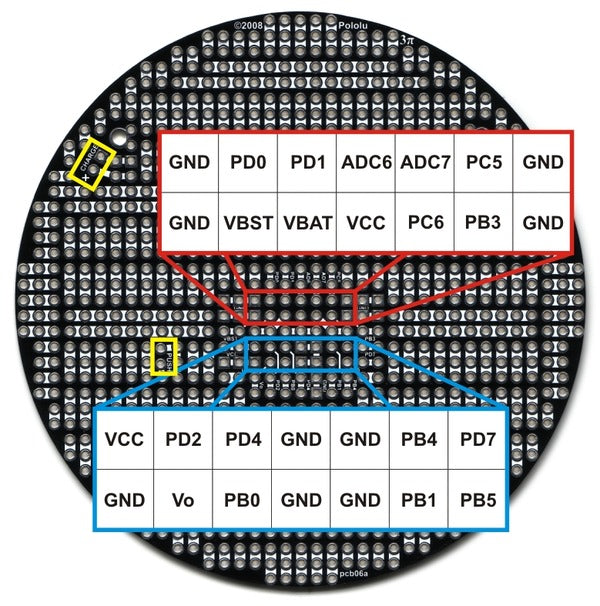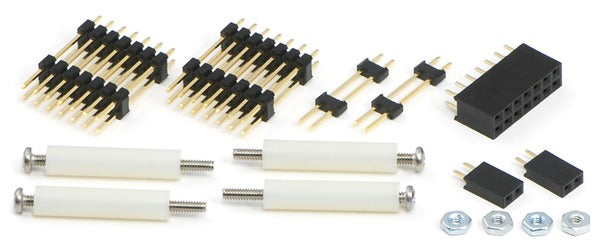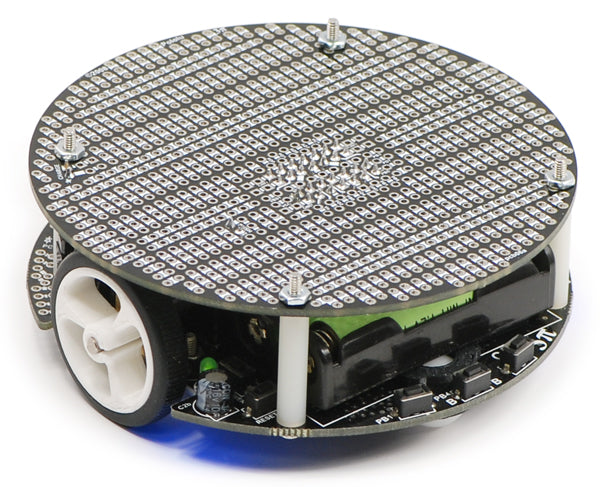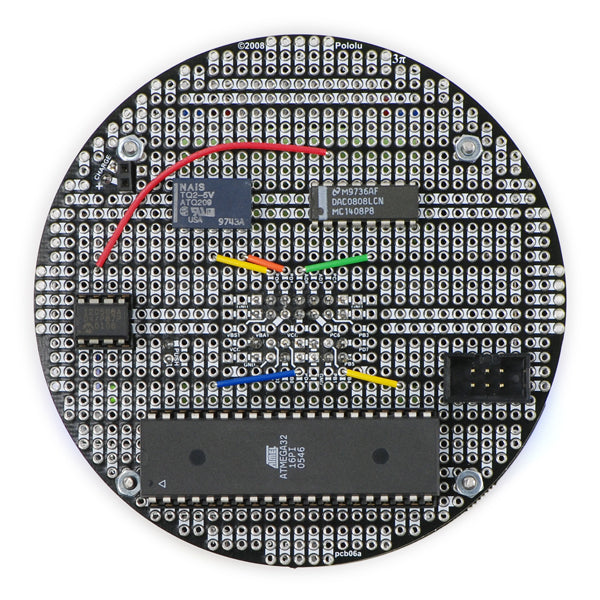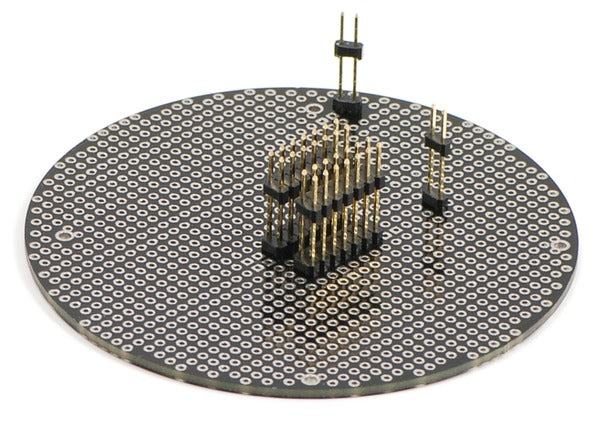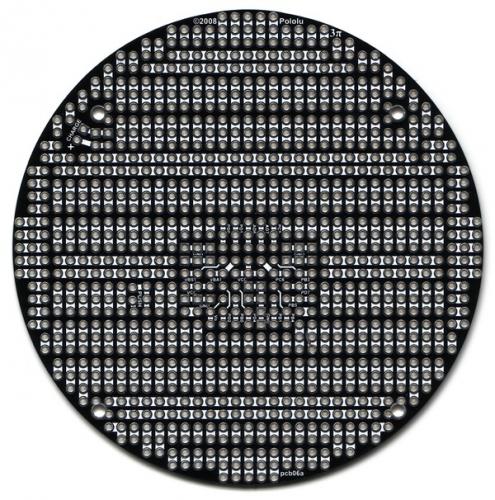
978 - Pololu 3pi Expansion Kit without cutouts - black
All prices are VAT included
This kit gives you everything you need to add a second level to your 3pi robot. In this version, the LCD pins are brought up to the expansion board from the base via extended headers for your own custom use. This black printed circuit board matches the color of the 3pi and can also serve as a general-purpose round prototyping board.
This kit includes a round printed circuit board (PCB) with holes spaced on a 0.100" grid, one extended 2×7 male header, two extended 1×2 male headers, one 2×7 female header, two 1×2 female headers, four 7/8" nylon spacers, four 1-1/4" screws, and four nuts as in the following picture:

The expansion PCB matches diameter of the 3pi chassis and mounts just above the tops of the wheels using the four included screws and spacers. Once assembled, the PCB has electrical connections to the base that allow you to interface your own electronics with the 3pi robot, which is sold separately. These connections give you access to the ATmega168's free/jumpered pins, as well as to the three on-board voltages: VBAT (battery voltage), VCC (regulated 5 V), and VBST (regulated 9.25 V that is supplied to the motors) .
Additionally, the expansion PCB connects to the base's power button and battery charge port, allowing you to add your own power buttons and charge ports.
This expansion kit replaces the 3pi's LCD. If you want to preserve the LCD, please consider the version of the expansion kit with cutouts
The expansion PCB is designed to provide plenty of prototyping space for your components. It has room for one 0.6" 40-pin DIP (dual in-line package) component, such as the ATmega32 in the picture below, or for numerous smaller DIP components. The prototyping space extends all the way to the edge of the PCB, allowing you convenient points to mount a variety of sensors such as bumper switches and range-finders. The silkscreen shows how the pads are connected; sharp knife or a small rotary tool cutoff wheel) if some of the pre-made connections interfere with your desired layout.
The two unused I/O lines on the 3pi's microcontroller are its serial transmit and receive lines. This means that you can add a second microcontroller or microcontroller board, such as a Baby Orangutan, Basic Stamp, or Arduino Nano, to the expansion PCB. This second microcontroller would deal with all of the sensors and additional hardware on the expansion PCB and control the base via serial commands. We have released a serial slave program for the 3pi base that turns it into a serially controlled platform that can be driven at the whim of another microcontroller.
Assembly
The supplied header pins allow you to establish all of the necessary electrical connections between the expansion PCB and the 3pi base. We recommend that you fully assemble the 3pi and its expansion kit before you solder anything. This will ensure that once everything is soldered in, the expansion platform will align properly with the base. We suggest that you assemble your expansion kit in the following order:
1) Place the 2×7 female header and one of the 2×1 female headers into the proper holes in the 3pi base as shown below (see the yellow rectangles):

2) Insert the long ends of the 2×7 and one 2×1 extended male header into these female headers, and insert an extended 2×1 male header into the battery charge port. Place the expansion PCB so the tops of these male headers seat in the proper places, as marked by the rectangles in the picture below. Note that the expansion PCB mounts with the silkscreen facing up:

3) Slip a nylon spacer between the base and the expansion PCB so that it lines up with the mounting hole on the base. Insert a screw from the underside of the base up through the base's mounting hole, the spacer, and the mounting hole on the expansion board. Holding the head of the screw against the base, twist the nut onto the other side, but don't tighten it all the way. Repeat this process for the three remaining screws, and then tighten them together so that the expansion PCB is aligned well with the base.
4) With the screws holding everything in place, you can now solder the female headers to the base and the male headers to the expansion PCB. Once everything is soldered in, you can remove the screws and pull the expansion PCB off of the base; it should look like the one in the picture below:

Note : This product is a kit designed to augment the 3pi robot (sold separately). Assembly of this kit requires soldering.
Documents and Downloads

